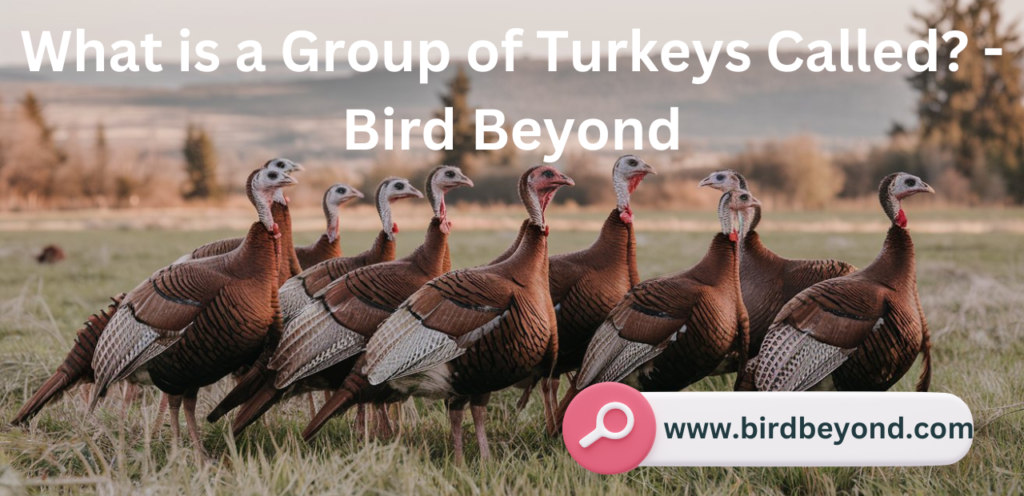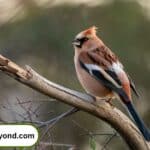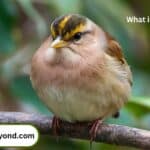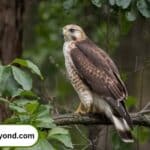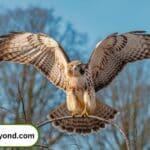Have you ever stumbled upon a gathering of wild turkeys in the woods and wondered, “What do I call this feathered assembly?” You’re not alone. The social nature of Group of Turkeys has fascinated humans for centuries, leading to a rich tapestry of names for their gatherings. In this deep dive, we’ll explore the world of turkey group names, from the official to the obscure, and uncover the fascinating history and science behind these collective nouns.
The Main Event: What’s a Group of Turkeys Called?
When it comes to naming a group of turkeys, the primary term that struts to the forefront is “rafter.” Yes, you heard that right – a rafter of turkeys is the most common collective noun used to describe these gregarious birds when they’re hanging out together.
The Origin of “Rafter”
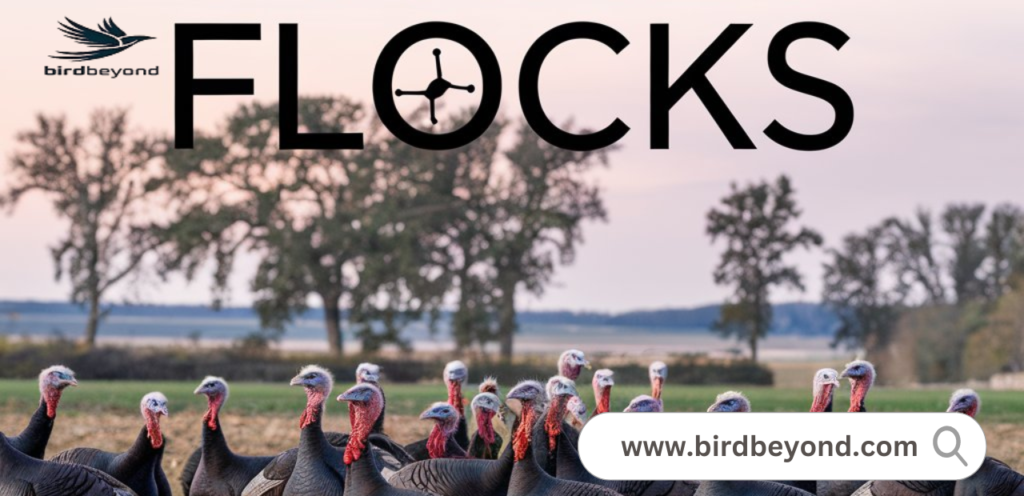
But why “rafter”? The term has an interesting etymology that takes us back to medieval times. “Rafter” likely derives from the Old English word “ræfter,” meaning a beam supporting a roof. The connection? Turkeys often roost in trees, and a group of them perched on branches might resemble rafters in a building.
Here’s a quick rundown of turkey group names:
| Rafter | General use |
| Flock | Common alternative |
| Gang | Informal, often used for foraging groups |
| Posse | Playful alternative |
Alternative Names: When Context Clucks
While “rafter” is the go-to term, turkey enthusiasts and hunters often use different names depending on the situation:
- Brood: Refers to a family group, typically a hen with her young poults
- Stag party: An all-male group of turkeys (no hens invited!)
- Lek: A group of males gathered for competitive mating displays in spring
- Gang: Often used for larger foraging groups, especially in fall
“In the world of wild turkeys, a rafter by any other name would gobble as sweet.” – Anonymous Turkey Watcher
From Egg to Gobbler: Life Stages and Group Names
The naming conventions for turkeys don’t stop at adult groups. Let’s break down the terminology for turkeys at different life stages:
Baby Talk: What Do We Call Turkey Chicks?
When discussing a group of turkey chicks, the official term is a brood of turkey chicks. However, there are some regional variations:
- Poults: The most widely accepted term for baby turkeys
- Chicks: Used interchangeably with poults in some areas
- Keets: Less common, but used in some farming communities
Teenage Turkeys: Jakes and Jennies
As turkeys grow, they get new names:
- Jakes: Young male turkeys
- Jennies: Young female turkeys
Adult Turkeys: Toms, Hens, and Mixed Rafters
Once fully grown, turkeys are known as:
- Toms: Adult male turkeys
- Hens: Adult female turkeys
- Mixed rafters: Groups containing both males and females
The Collective Noun Craze: More Than Just Turkey Talk
The fascination with collective nouns extends far beyond turkeys. These terms, also known as “terms of venery,” have captivated language lovers for centuries.
A Brief History of Collective Nouns
Collective nouns for animals gained popularity in the late Middle Ages. The Book of Saint Albans, published in 1486, included a list of “companies of beasts and fowls,” which sparked a trend that continues to this day.
Why We Love Group Names
There’s something inherently satisfying about having a specific term for a group of animals. It’s like being part of an exclusive club where you know the secret handshake. Plus, many of these terms are just plain fun to say!
Turkey-Inspired Collective Nouns in Pop Culture
The popularity of turkey group names has even influenced modern language:
- “Rafter” is sometimes used jokingly to describe a group of bodybuilders
- In tech circles, a group of software bugs might be called a “gobble”
Beyond the Barnyard: Other Intriguing Bird Group Names
To truly appreciate the uniqueness of turkey group names, let’s compare them to some other fascinating collective nouns for birds:
- A murder of crows
- An unkindness of ravens
- A parliament of owls
- A covey of quail
- A skein of geese
Each of these names has its own rich history and cultural significance. For instance, “a murder of crows” is thought to stem from the birds’ black color and their occasional habit of gathering around dead animals.
The Science Behind Turkey Flocking
Understanding why turkeys gather in groups helps explain the variety of names we use for their assemblies. Turkey behavior is fascinating from a scientific perspective:
Evolutionary Advantages of Group Living
Turkeys, like many birds, find safety in numbers. A rafter of turkeys can:
- Spot predators more effectively
- Share information about food sources
- Maintain body heat in cold weather
Seasonal Changes in Flock Dynamics
Turkey group behavior changes throughout the year:
- Spring: Males form leks for mating displays
- Summer: Hens lead broods of chicks
- Fall: Large mixed-gender groups form for foraging
- Winter: Separate male and female flocks often roost together
Domestication’s Impact on Turkey Social Behavior
Domestic turkeys behave differently from their wild counterparts:
- Larger flock sizes in farm settings
- Less pronounced hierarchical structures
- Reduced seasonal variations in grouping behavior
Turkey Groups in Conservation and Management
Understanding turkey group dynamics is crucial for wildlife management and conservation efforts.
Tracking Wild Populations
Wildlife management professionals use knowledge of turkey flocking behavior to:
- Estimate population sizes
- Assess habitat health
- Plan conservation strategies
Challenges in Managing Domestic Turkey Flocks
Farmers and poultry scientists must consider group dynamics when:
- Designing housing facilities
- Implementing feeding strategies
- Managing disease outbreaks
How Group Names Impact Public Perception
The terms we use for turkey groups can influence how people view these birds:
- “Rafter” evokes images of structural strength
- “Gang” might imply a nuisance in urban areas
- “Brood” often elicits protective instincts in humans
Case Study: The Great Turkey Naming Debate of 2018
In 2018, the National Wild Turkey Federation (NWTF) sparked controversy when they proposed standardizing turkey group names. Here’s what happened:
- NWTF suggested using “flock” exclusively for all turkey groups
- Traditional hunters protested, preferring established terms like “rafter” and “brood”
- Wildlife biologists weighed in, emphasizing the importance of context-specific terminology
- After heated debate, NWTF retracted the proposal, acknowledging the rich tradition of varied turkey group names
This case highlights the cultural significance of these terms and the passion they inspire in turkey enthusiasts.
Turkey Roosting: A Nightly Spectacle
One of the most impressive sights in the world of wild turkeys is their roosting behavior. As dusk approaches, a rafter of turkeys will seek out tall trees for their nightly rest.
The Roosting Ritual
- Turkeys begin to gather near potential roost sites about an hour before sunset
- They communicate with soft yelps and purrs
- One by one, they fly up into the trees, often choosing the highest branches
- By nightfall, the entire rafter is settled in, creating a silhouette against the darkening sky
This behavior not only protects them from ground predators but also allows them to survey their surroundings at first light.
Turkey Courtship Displays: When Rafters Become Leks
During mating season, male turkeys put on one of nature’s most impressive shows. This is when a group of turkeys transforms into what’s known as a lek.
Key Features of Turkey Leks:
- Strutting: Males fan their tail feathers and puff out their body feathers
- Gobbling: Loud vocalizations to attract females and intimidate rivals
- Spitting: A dramatic expulsion of air that creates a distinctive sound
- Drumming: A low-frequency sound produced by rapid vibration of their air sacs
These displays can involve multiple males competing for the attention of females, turning a simple rafter of turkeys into a spectacular avian dance-off.
Medieval Collective Nouns: The Origins of “Rafter”
The term “rafter” for a group of turkeys has its roots in medieval times, when collective nouns for animals became popular among the nobility.
Timeline of Collective Noun Development:
- 12th Century: First recorded use of collective nouns for animals in French
- 15th Century: The trend spreads to England
- 1486: Publication of The Book of Saint Albans, which popularized many animal group names
- 16th Century: “Rafter” first appears in written records as a term for turkeys
This rich history adds depth to our understanding of turkey collective nouns and connects us to centuries of linguistic tradition.
Conclusion: The Enduring Allure of Turkey Gatherings
From the official “rafter” to the seasonal “lek,” the names we use for groups of turkeys reflect our fascination with these remarkable birds. Whether you’re a seasoned ornithologist, an avid bird-watcher, or simply someone who appreciates the quirks of language, turkey group names offer a window into both natural history and human creativity.
Next time you spot a gathering of turkeys, take a moment to appreciate the complexity of their social structures and the rich tapestry of names we’ve woven to describe them. And remember, whether you call it a rafter, a flock, or a gobble squad, the joy of observing these magnificent birds in their natural habitat remains the same.
So, grab your binoculars, head out into nature, and see if you can spot a rafter of your own. Just be prepared – once you start noticing turkey groups, you might find yourself irresistibly drawn into the wonderful world of animal group names!

William Henry is a distinguished blogger with a flair for avian storytelling. With a wealth of experience, he delivers captivating insights and expert knowledge to Bird Beyond. William’s passion for birds and his engaging writing style make him a standout voice in the birdwatching community, offering readers both valuable information and delightful narratives.

